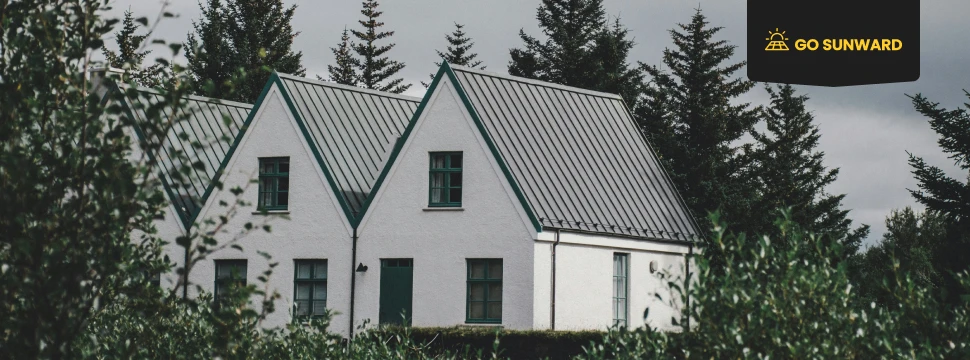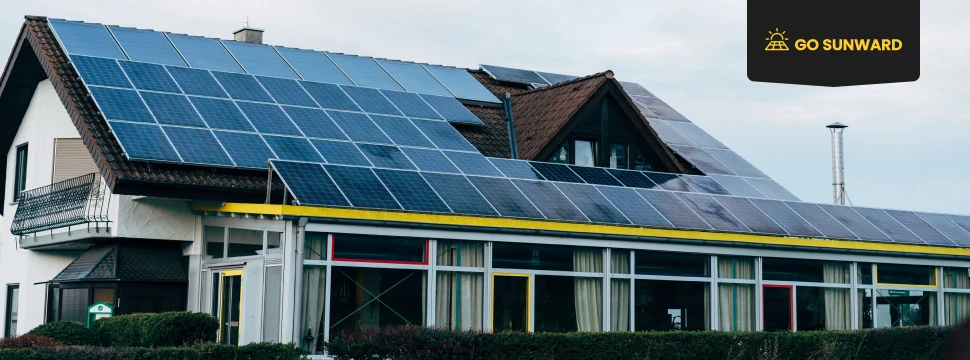5 Amazing Solar Homes: See How They Run 100% On Solar
In an era of increasing environmental consciousness and a growing need for sustainable living solutions, solar-powered homes have emerged as an example of innovation and sustainable, low-carbon living. If you’ve been curious whether or not people really save money on solar, then you’re in for a treat ☀️
In this article, we take you on a journey through five extraordinary solar homes that have truly embraced the future of sustainable living. From cutting-edge technologies to ingenious architectural designs, these homes showcase the incredible potential of solar energy as a primary power source.
As we explore each of these solar energy systems, you’ll discover how they not only run entirely on solar energy, thus lowering electricity bills, but also manage to combine style, functionality, and environmental responsibility in awe-inspiring ways. Whether you’re a renewable energy enthusiast, an architecture aficionado, or simply someone curious about the possibilities of solar installations, these homes will leave you inspired and optimistic about the future of sustainable housing.
100% Solar: Is It Really Possible?
Achieving a 100% solar-powered and net-zero house requires strategically integrating solar energy generation and energy efficiency measures. At the core of such a home lies a robust solar photovoltaic (PV) system designed to capture sunlight and convert it into electricity. Typically, solar panels are strategically positioned on the roof and surrounding areas to maximize sunlight conditions. This abundant energy generated during the day is then stored in advanced battery systems, ensuring uninterrupted power availability even at night.
In addition to solar PV, solar thermal technology often plays a significant role in achieving net-zero status. Solar thermal collectors, typically installed on rooftops or suitable surfaces, capture and harness the sun’s heat energy. This thermal energy can be utilized for various purposes, including space heating, domestic hot water, and even cooling through absorption chillers. By efficiently utilizing this renewable heat source, the home further reduces its reliance on non-renewable energy.
Complementing these solar technologies are energy-efficient measures such as LED lighting, energy-efficient appliances, smart thermostats, and well-insulated walls and windows. Meticulous design considerations, including passive solar heating and cooling strategies, as well as airtight construction, minimize energy consumption.
The outcome is a home that not only meets but often exceeds its energy needs. Through net metering, surplus electricity generated during sunny days can be fed back into the grid, allowing homeowners to earn credits or even generate income, further enhancing the financial benefits of these sustainable homes and boosting the home value.
5 Amazing 100% Solar Homes
Let’s now explore five remarkable solar homes found in various communities worldwide that epitomize the future of sustainable living. These homes demonstrate cutting-edge technologies and innovative architectural designs. If you’re looking to do your own instillation, you can browse the the best solar companies on our vendor marketplace.
#1 The Waternest 100
This innovative floating roundhouse is entirely powered by solar energy and is designed to be fully recyclable. The house, situated on water, features a unique circular design with a curved roof adorned with solar panels, making it an energy-efficient and environmentally friendly dwelling. The solar panels capture sunlight and convert it into electricity to power the home’s various systems and appliances, ensuring it operates off-grid and with minimal environmental impact.
What sets this roundhouse apart is its commitment to sustainability. Not only is it powered by renewable energy, but it is also constructed with recyclable materials, emphasizing a cradle-to-cradle design approach. This means that at the end of its lifecycle, the house can be disassembled, and its components reused or recycled, reducing waste and promoting a circular economy.
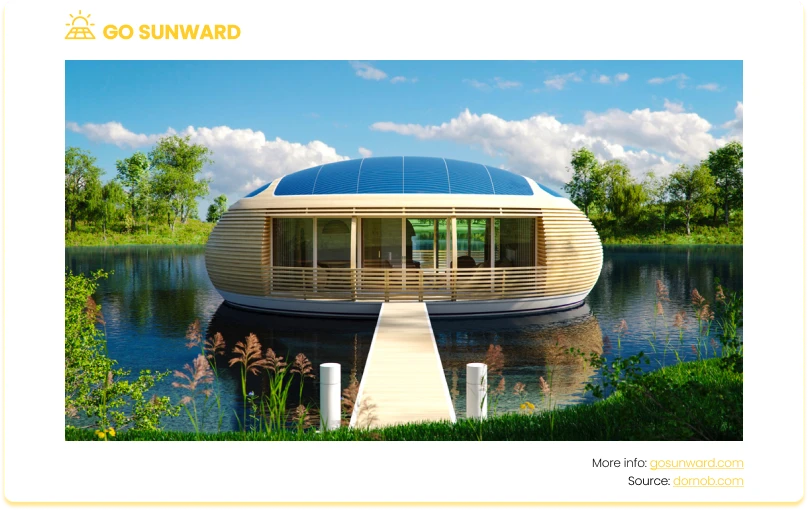
#2 The Northern Nomad
The Northern Nomad is a groundbreaking achievement in the world of tiny houses, setting a remarkable standard for sustainable and net-zero living. This dwelling is 100% solar powered, thanks to its integrated solar panel roof that harnesses the sun’s energy to meet all of its electricity needs.
Designed and constructed by a group of forward-thinking students from Carleton University, the Northern Nomad boasts several remarkable innovations. Its roof, adorned with solar panels, not only generates electricity but also incorporates an atmospheric water generator prototype. This innovative system captures moisture from the air and transforms it into clean, drinkable water, providing a self-sustaining water source for its occupants.
The Northern Nomad’s strong commitment to sustainability extends to its insulation, which employs vacuum-insulated panels to ensure optimal thermal efficiency. This means the tiny house maintains a comfortable interior temperature year-round, minimizing energy consumption for heating and cooling. Moreover, it features a state-of-the-art home automation system, allowing for precise control over various aspects of the house, from lighting to climate control.
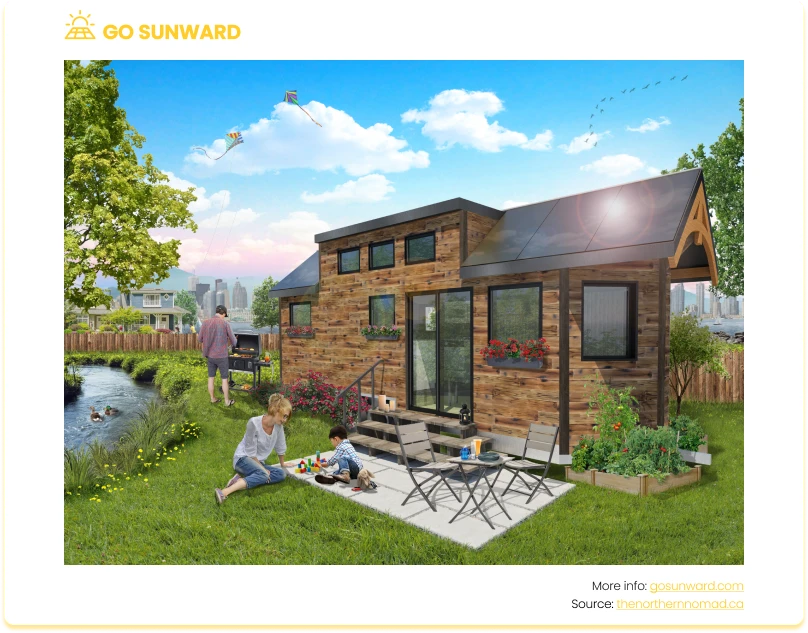
#3 Shelter3
Disaster-resistant architecture has often been associated with utilitarian, unattractive concrete structures. However, Shelter3, pronounced “shelter cubed,” challenges this notion by exemplifying a harmonious blend of strength, style, and sustainability.
One of its standout features is the incorporation of a robust photovoltaic system, capable of generating more electricity than the house requires for its daily needs. This self-sufficiency ensures that Shelter3 can continue to function seamlessly, even when the conventional power grid is disrupted or destroyed. This level of energy independence is not only environmentally responsible but also provides peace of mind during emergencies.
The creation of this net-zero marvel is credited to the collective effort of students from Crowder College and Drury University. In a world where climate-related events are becoming increasingly unpredictable, Shelter3 serves as an inspiring example of innovation and future-proof planning.
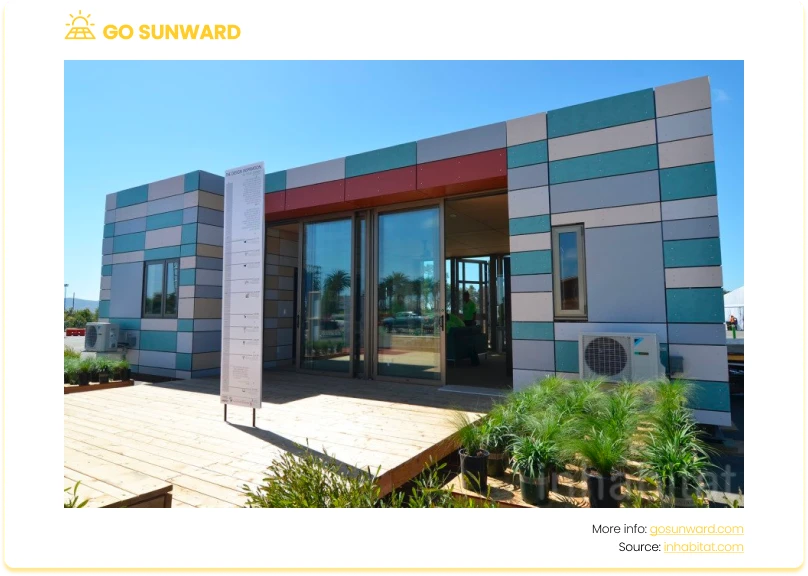
#4 Aggie Sol
The Aggie Sol project, spearheaded by California’s UC Davis students, represents a significant step forward in making the benefits of solar-powered homes accessible to lower-income individuals, particularly agricultural farm workers along the West Coast of the US. While solar homes have become increasingly affordable for the middle-class market, there has been a pressing need to extend these cost-saving and sustainable solutions to those who may benefit most.
At the core of the Aggie Sol concept is a prefab solar home designed with the unique needs and circumstances of low-income farm workers in mind. It addresses both affordability and environmental sustainability. One of the standout green features of this innovative home is its rooftop sprinkler cooling system. This system not only harnesses the sun’s power for electricity but also incorporates a rainwater collection and reuse mechanism. Rainwater is collected and stored, then used as a natural coolant for the home. This design helps maintain a comfortable indoor temperature and also conserves water resources.
The Aggie Sol project is a testament to the power of innovative thinking and community-centric design. By focusing on the specific needs of lower-income individuals and incorporating sustainable practices, it provides affordable housing and empowers residents to lead more energy-efficient and environmentally responsible lives.
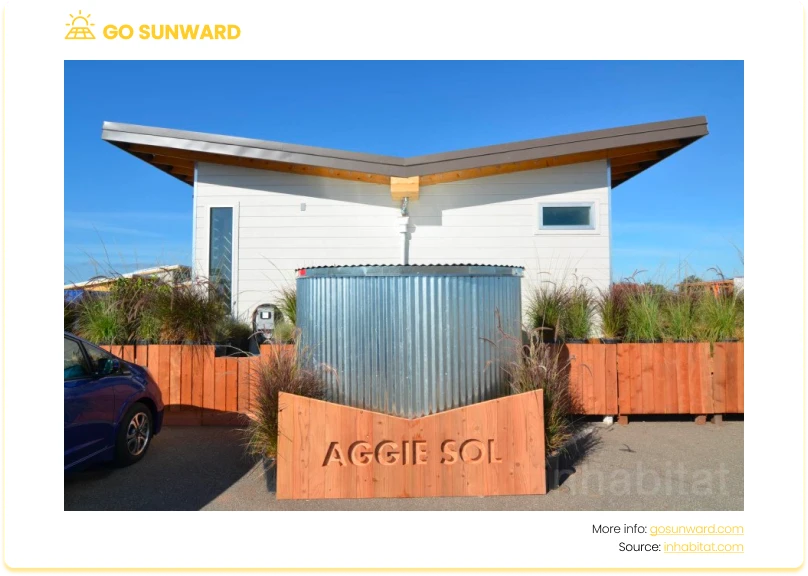
#5 The Solar House
The Solar House in the UK stands as an exceptional model of sustainable and energy-efficient residential architecture. At its core, the project features an array of 28 hybrid Photovoltaic Thermal (PVT) panels adorning the roof. These panels are designed to collect both thermal and electrical energy from the sun, making the house highly self-sufficient in terms of its power needs.
What sets this project apart is its intelligent energy management system. The energy generated by the PVT panels is utilized within the house as needed, ensuring a constant supply of clean and renewable electricity. Notably, during the sun-drenched summer months, when excess energy is produced, the surplus is ingeniously redirected. Rather than going to waste, this surplus energy is used to warm the ground beneath the house, effectively storing it for later use.
This unique thermal energy storage system comes into play during the colder months, when heating becomes essential. The stored thermal energy can be tapped into to provide warmth, reducing the need for conventional heating methods and further enhancing the house’s energy efficiency.
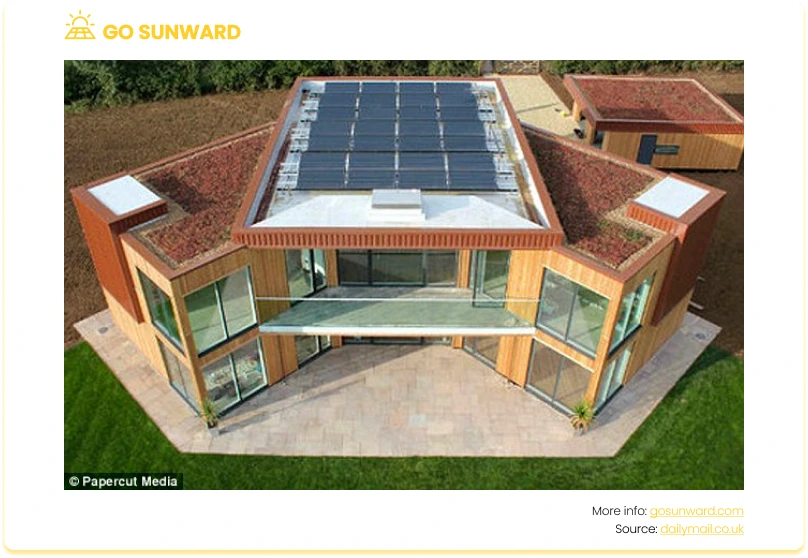
What’s The Next Step For You?
Transitioning to a 100% solar-powered home is an admirable goal that involves careful planning and a commitment to sustainability.
Start by conducting a thorough energy audit of your home to identify areas where you can reduce energy consumption. This may involve upgrading insulation, sealing air leaks, and replacing old, inefficient appliances with energy-efficient alternatives. Simultaneously, consult with solar energy experts to assess your property’s solar potential. They can determine the ideal location for solar panels, recommend system sizes, and provide cost estimates.
Once you’ve assessed your energy efficiency and solar potential, explore financing options that suit your budget and goals. This could involve purchasing a solar system outright, entering into a lease or power purchase agreement, and researching available solar incentives and rebates to offset initial costs. Additionally, you’ll need to consider incorporating battery storage systems to store excess solar energy for use during evenings or cloudy days, enhancing energy independence.
Ultimately, transitioning to a 100% solar-powered home represents not only a significant step towards environmental responsibility but also a path to long-term energy savings and a more sustainable future.
Conclusion
The exploration of these five solar-powered homes has showcased their potential beyond architectural marvels. They represent a path toward a cleaner, more sustainable future. These homes demonstrate the versatility of solar technology, from advanced panels to efficient battery storage systems. Alongside energy-efficient designs and sustainable living practices, they pave the way for a greener way of life. You can explore more about off-grid vs on-grid solar here.
These remarkable solar homes serve as a useful guide that solar power is not just inspirational but also a practical solution to our energy needs. By adopting similar technologies and practices, we can all contribute to a brighter and more sustainable future.

